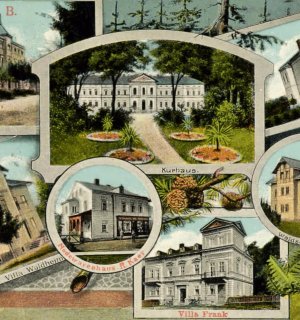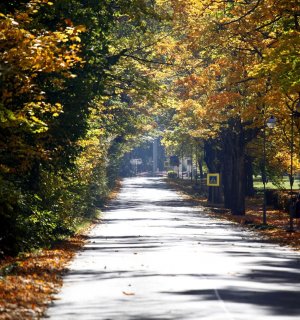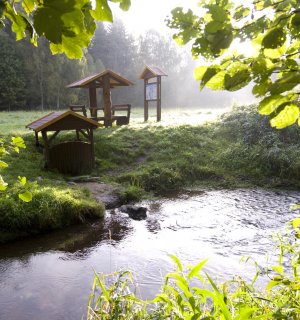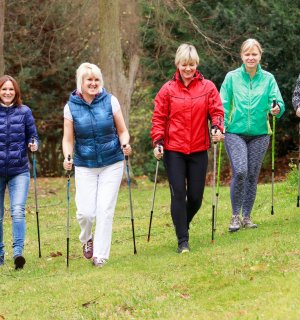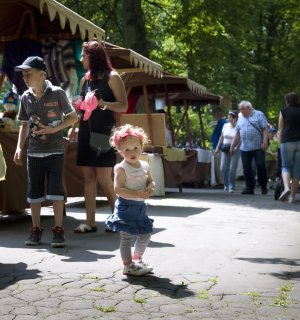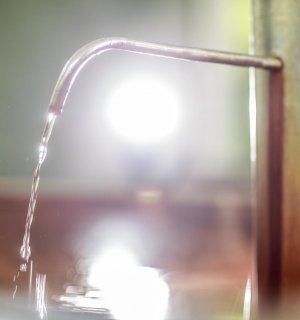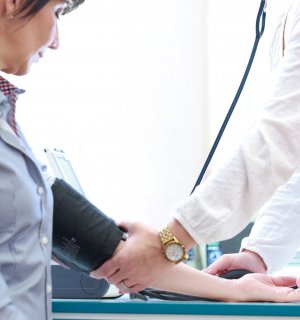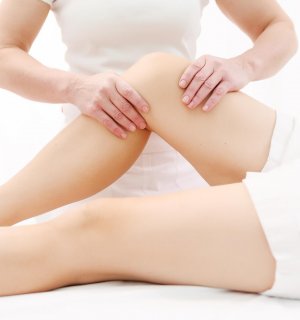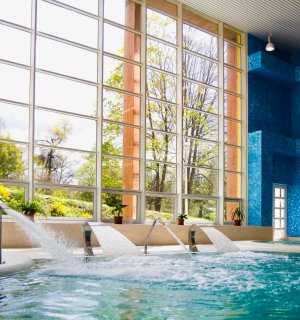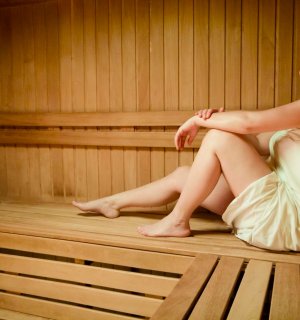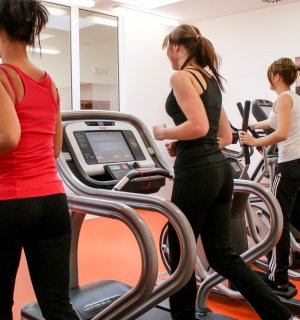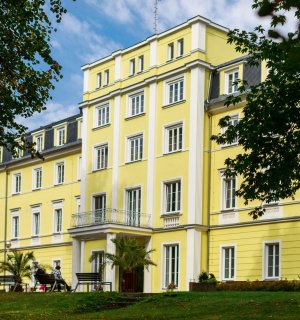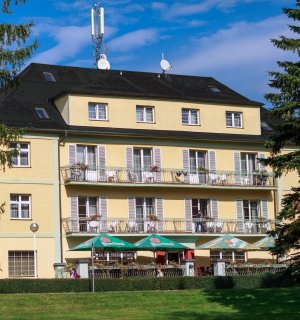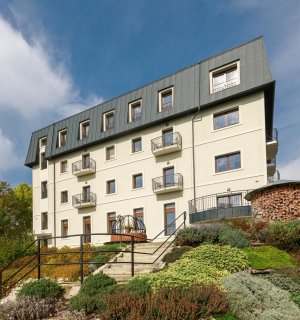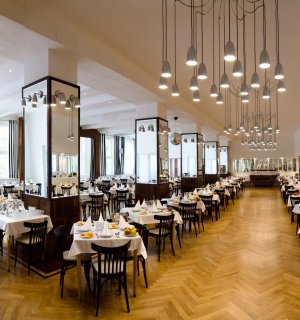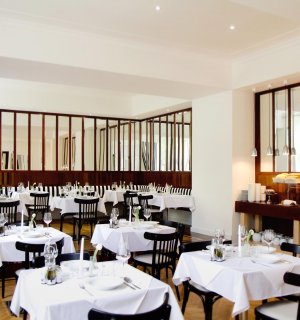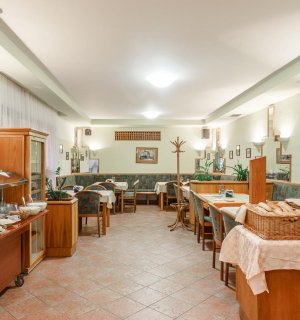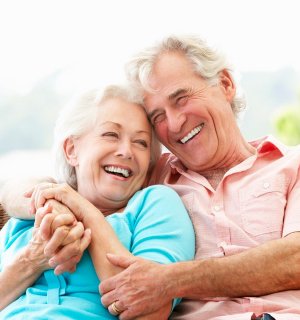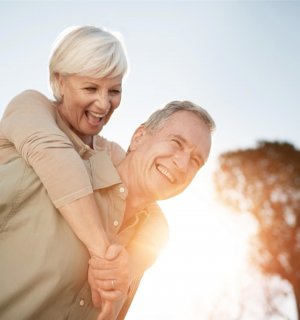- Konstantinovy Lázně
-
Konstantinovy Lázně
-
- Leisure time
-
Leisure time
-
- Cure
-
Cure
-
- Wellness center
-
Wellness center
-
- Accommodation
-
Accommodation
-
- Dining
-
Dining
-
- Packages and prices
-
Packages and prices
-

- Konstantinovy Lázně
- History and presence
History and presence
-
1566
The first written mention of the local springs is probably the record in the urbarium from 1566, which recorded the distribution of the heritage of the owner of the Bezdružice estate. ¨The record also mentions the forest are in the “Smrdak” or “Smraďák” locality” Farmers from Nová Ves used to come here to refresh themselves in a small pool and many of them recognized the healing effects of the strangely coloured and stinking water.
-
1790
In 1970, Dominic Constantine, Prince of Löwenstein became interested in the use of the sulphur spring; He tried in vain to find usable minerals nearby.. After failing to find coal, he had samples of the water from the spring assessed by the mineral water expert Dr. Nehr from Mariánské Lázně and professor Wirabel of Wertheim, and on the basis of their statement he wanted to buy out the land and establish a spa here, following the example of developing Mariánské Lázně.
-
1803
-
1837
The land with the spa was bought from the farmers of Nová Ves by Constantine's son, Charles Löwenstein on 29th May 1837. At this time, the epilepsy was successfully treated here with boggy wraps from local sources. The spa operation was a prestigious but lossy business for the Löwensteins and therefore they sold the spa in 1872.
-
1872
A company from Pilsen, managed by the deputy of the Imperial Council, JUDr. Franz Pankratz, the owner of coal mines near Nýřany, becomes the owner. The new owner transferred the spa to drinkable springs at the foot of Hradišťský vrch and during 1873 and 1874 built a spa house called Curhaus, part of which is still part of the spa house Prusík. Pankratz also dedicated his efforts to the park in its surroundings. A roofed wooden colonnade in Swiss style with access to drinking springs was built. Against it, on a small hill, Pankratz's wife, Sofia, had a chapel built between 1898 and 1890, dedicated to the Virgin Mary of Lourdes and a new village started to form around the spa park.
Show more HideUntil 1900, the Spa was led professionally led by MUDr. R. J. Dlauhy. Epilepsy, rheumatism, and anaemia were treated here. Sulphur and carbonated baths complemented with drinking cure and boggy wraps were used here fpr treatments. After the death of Franz Pankratz, his son Otmar took over the management of the spa. Professional leadership is assigned to Pankratz's son-in-law, dr. Eduard Lenz.
-
1901
-
1913
-
1928
In 1928, Konstantinovy Lázně was officially recognized as a spa treatment site, while the original one-storey main building was rebuilt to its present form. One year later, a swimming pool was built and then a water line was brought into the village. The owners and tenants of the spa changed quite often during this period.
-
1938
After the Munich Agreement - 5.10.1938, Konstantinovy Lázně, located in the Sudetenland, became part of the Greater German Reich, and the spa administration was taken over by the district authority in Teplá. In 1943 the spa was closed and it became a military hospital. Americans entered the village on 6th May 1945 and established a transit camp for the release of captured German soldiers.
-
1946
On 9th June 1946, the first spa season was officially opened under the auspices of the District Administrative Commission in Konstantinovy Lázně.
Show more HideAfter the abolition of the District Administrative Commission in the years 1950-1955, the spa functioned as a recreational centre under the Central Health Insurance Company as part of the "Czechoslovakian state spas and natural springs" and the distribution of the spa vouchers was ensured by the revolutionary trade union movement, which also became the owner of some of the buildings. In 1956, the Konstantinovy Lázně company was administratively placed under Mariánské Lázně. Circulatory system diseases have become the decisive indication.
-
1959
26. 1. 1959 the main spa building was renamed as the "Prusík Institute" with the participation of MUDr. Prusík - at the instigation of the then new senior doctor and director of the Spa, MUDr. Boudyš, who was one of the students of MUDr. Bohumil Prusík, a prominent internist, a cardiologist and, above all, a great supporter of the local spa.
-
1992
The latest history of Konstantinovy Lázně dates back to 1st May 1992. It is connected with the establishment of a separate joint-stock company named "Léčebné lázně Konstantinovy Lázně a.s." (Healing Spa Konstantinovy Lázně) The new spa company starts gradual reconstruction of the buildings and modernization - in 1993, the Mánes spa house is reconstructed, followed by the Jirásek hotel in 1996 and the Palacký and Purkyně spa houses in 2000. In 2005, also partial reconstruction of the main spa building took place.
At the same time the spa ads new events and activities in its offer. In 1998, the first year of the sculpture symposium took place in the spa park. Sculptures created in this and the following years have become part of the park. In 2006, Nordic walking was added to medical rehabilitations. There are trails of various difficulties created in the park and surroundings for the new activity and the annual Nordic Walking Cup is also organized by the spa.
-
2010
On 1.7. 2010, a new wellness centre opens. It is a two-storey building with the area of 800 m², which offers a wide range of wellness therapies and services including a whirlpool, bio and Finnish sauna, steam baths and fitness. Two years later, Srdíčko Café opens in the main spa building with a large terrace in the spa park.
-
2012
-
2014
In 2014, the spa hotel Löwenstein was opened after a complete reconstruction. The new boutique hotel has extended the range of accommodation in Konstantinovy Lázně with the highest comfort class. In the following year, the first to have a new interior is the biggest spa restaurant called Piano, and the new Park restaurant begins its operation soon afterwards. In 2016, a barbecue house was built in the spa park, used as a kitchen of a new outdoor restaurant in the summer. In 2017, the entrance hall of the spa hotel Prusík and the adjoining rooms also got a new look.


